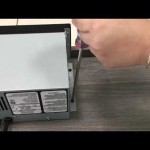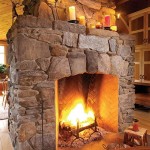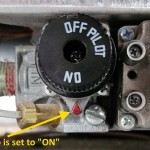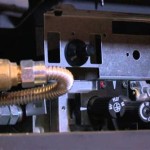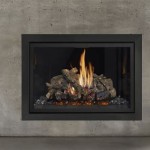Here is an article about the best gas fireplaces, written in an expository style and adhering to the specified requirements:
Selecting the Best Gas Fireplace: A Comprehensive Guide
Gas fireplaces offer a blend of convenience, efficiency, and aesthetics, making them a popular choice for homeowners seeking supplemental heating or creating a cozy ambiance. Unlike traditional wood-burning fireplaces, gas fireplaces require minimal maintenance, ignite with the push of a button, and produce consistent heat output. However, the market offers a wide array of models, features, and fuel types, demanding careful consideration to ensure the selected gas fireplace meets specific needs and preferences.
This article provides a comprehensive guide to navigating the landscape of gas fireplaces, outlining key factors to consider when choosing the best option for a particular residence. Understanding these factors allows prospective buyers to make informed decisions and acquire a gas fireplace that offers optimal performance, safety, and visual appeal.
Understanding Different Types of Gas Fireplaces
Gas fireplaces are categorized into several types based on their installation methods and venting systems. Each type offers distinct advantages and disadvantages, impacting both the installation process and the overall performance of the fireplace.
Direct Vent Fireplaces: Direct vent fireplaces are sealed combustion systems that draw combustion air from outside the home and vent exhaust gases directly outdoors through a coaxial pipe. This design eliminates the need for a traditional chimney, making direct vent fireplaces versatile for installation in various locations, including interior walls and rooms without existing chimneys. Direct vent systems are considered highly efficient and safe because they prevent indoor air from being used for combustion, reducing the risk of carbon monoxide poisoning. Furthermore, the sealed combustion process minimizes heat loss, maximizing heating efficiency.
Vent-Free Fireplaces: Vent-free fireplaces, also known as ventless fireplaces, do not require external venting. They operate by burning gas with a high degree of efficiency, producing minimal emissions. These fireplaces are equipped with oxygen depletion sensors (ODS) that automatically shut off the gas supply if oxygen levels in the room drop below a safe threshold. While vent-free fireplaces offer the advantage of easy installation and high heating efficiency, they are subject to local building codes and regulations, some of which prohibit their use. It is crucial to consult local authorities and follow manufacturer's instructions to ensure safe and compliant operation.
B-Vent Fireplaces: B-vent fireplaces, also known as natural vent fireplaces, utilize existing chimneys or dedicated B-vent pipes to exhaust combustion gases. They draw combustion air from the surrounding room, making them less efficient than direct vent fireplaces. B-vent fireplaces are typically less expensive than direct vent models, but installation may be more complex if a suitable chimney is not already present. Regular chimney inspections and maintenance are essential to ensure proper ventilation and prevent carbon monoxide buildup.
Gas Inserts: Gas inserts are designed to be installed into existing wood-burning fireplaces. They effectively convert inefficient, open-hearth fireplaces into high-efficiency gas-burning appliances. Gas inserts are available in direct vent, B-vent, and vent-free options, offering flexibility in installation and venting. The selection of a suitable gas insert depends on the size and configuration of the existing fireplace, as well as the desired heating capacity and venting requirements.
Evaluating Heating Capacity and Efficiency
The heating capacity of a gas fireplace is measured in British thermal units (BTUs), which indicates the amount of heat the fireplace can generate per hour. Determining the appropriate BTU rating for a particular space depends on factors such as room size, insulation levels, climate, and desired temperature increase. A general rule of thumb is that 30 to 40 BTUs are needed per square foot of living space in colder climates, while 20 to 30 BTUs may suffice in milder regions. However, it is essential to consult with a qualified HVAC professional to accurately assess heating requirements and select a gas fireplace with adequate BTU output.
Heating efficiency, measured by the Annual Fuel Utilization Efficiency (AFUE), indicates the percentage of fuel energy converted into usable heat. Direct vent fireplaces typically have AFUE ratings of 70% or higher, while vent-free fireplaces can achieve efficiencies of 99% due to the absence of venting. B-vent fireplaces generally have lower AFUE ratings due to heat loss through the venting system. Higher AFUE ratings translate to lower fuel consumption and reduced heating costs over the lifespan of the fireplace. When evaluating gas fireplaces, prioritize models with high AFUE ratings to maximize energy savings.
Programmable thermostats and remote controls offer additional control over heating output and energy consumption. Programmable thermostats allow users to set specific temperature schedules, automatically adjusting the fireplace's heat output based on time of day or occupancy. Remote controls provide convenient on/off operation and temperature adjustments from a distance, enhancing user comfort and convenience.
Considering Aesthetics and Design Options
Gas fireplaces are available in a wide range of styles, finishes, and design options to complement various interior decor schemes. From traditional log sets to contemporary glass media, the aesthetic appeal of a gas fireplace can significantly enhance the ambiance of a room.
Log Sets: Traditional log sets mimic the appearance of real wood logs, providing a familiar and comforting aesthetic. Log sets are typically crafted from ceramic or refractory materials and are designed to withstand high temperatures. Realistic log sets feature intricate details, such as bark textures and charred surfaces, creating a convincing imitation of a wood-burning fire. Flame patterns and ember bed effects can further enhance the realism of log sets.
Glass Media: Contemporary gas fireplaces often feature glass media, such as fire glass or glass beads, instead of traditional log sets. Glass media comes in a variety of colors, shapes, and sizes, allowing for customized design options. The reflective surfaces of glass media create a visually stunning display of light and color, adding a modern and sophisticated touch to any room. Glass media is typically made from tempered glass to ensure durability and safety.
Fireplace Surrounds: Fireplace surrounds, also known as mantels or facades, frame the gas fireplace and provide a decorative focal point. Surrounds are available in a wide range of materials, including wood, stone, brick, and metal, allowing for seamless integration with existing architectural elements. Surrounds can be customized with decorative moldings, carvings, and finishes to create a unique and personalized look. The size and style of the surround should be proportional to the fireplace and the surrounding room.
Flame Presentation: The flame presentation of a gas fireplace refers to the appearance and behavior of the flames. Different burner designs and gas flow configurations can produce varying flame heights, shapes, and patterns. Some gas fireplaces feature adjustable flame settings, allowing users to customize the flame intensity and appearance. Realistic flame presentations mimic the flickering and dancing flames of a wood-burning fire, while others offer more stylized or contemporary flame effects.
Prioritizing Safety Features and Certifications
Safety is a paramount consideration when selecting a gas fireplace. Gas fireplaces should be equipped with safety features such as oxygen depletion sensors (ODS), flame failure devices (FFDs), and overheat protection systems to prevent accidents and ensure safe operation.
Oxygen Depletion Sensors (ODS): Omission of an ODS in vent-free models or malfunction of the components can lead to dangerous outcomes. ODS automatically shut off the gas supply if oxygen levels in the room drop below a safe threshold, preventing carbon monoxide buildup. In the case of vented fireplaces, proper venting is essential to safely exhaust combustion gases outdoors.
Flame Failure Devices (FFDs): FFDs automatically shut off the gas supply if the flame is extinguished, preventing unburned gas from accumulating in the room. FFDs are typically thermocouple-based devices that sense the presence of a flame and maintain the gas valve in the open position. If the flame is lost, the thermocouple cools down, causing the gas valve to close and stop the flow of gas.
Overheat Protection Systems: Overheat protection systems prevent the fireplace from overheating, which can damage components or pose a fire hazard. These systems typically consist of temperature sensors and automatic shut-off mechanisms that activate when the fireplace reaches a predetermined temperature limit.
Product Certifications: Gas fireplaces should be certified by recognized testing agencies such as the Canadian Standards Association (CSA) or Underwriters Laboratories (UL). These certifications indicate that the fireplace has been tested and meets established safety standards. Look for certification labels on the fireplace to ensure compliance with safety requirements.
Professional Installation: Gas fireplace installation should be performed by a qualified and licensed professional to ensure proper venting, gas line connections, and safe operation. Improper installation can lead to gas leaks, carbon monoxide poisoning, or other safety hazards. Always follow manufacturer's instructions and local building codes during installation.
Selecting the best gas fireplace requires careful consideration of various factors, including the type of fireplace, heating capacity, efficiency, aesthetics, and safety features. By thoroughly evaluating these aspects, homeowners can choose a gas fireplace that provides optimal performance, comfort, and peace of mind. Regular maintenance and inspections are essential to ensure the continued safe and efficient operation of the gas fireplace.

Best Gas Fireplace Inserts Fireplaces Direct Learning Center

5 Surprising Facts About The Best Gas Fireplaces

Gas Stove Or Open Fire What S Best For Me Chesneys

How To Buy A Gas Fireplace Insert Buyer S Guide From Regency

The Best Gas Fireplaces Of 2024 Direct Learning Center
.aspx?strip=all)
Top 11 Gas Fireplace Insert Trends Of 2024

The 7 Best Gas Fireplaces Of 2024

How To Choose The Best Gas Fireplace For Your Home

Best Outdoor Gas Fireplaces Direct Learning Center

5 Surprising Facts About The Best Gas Fireplaces


